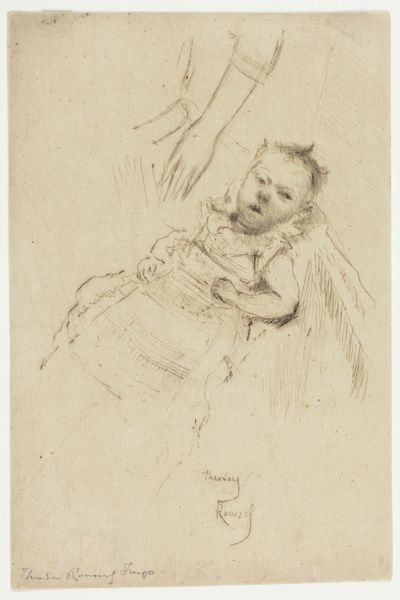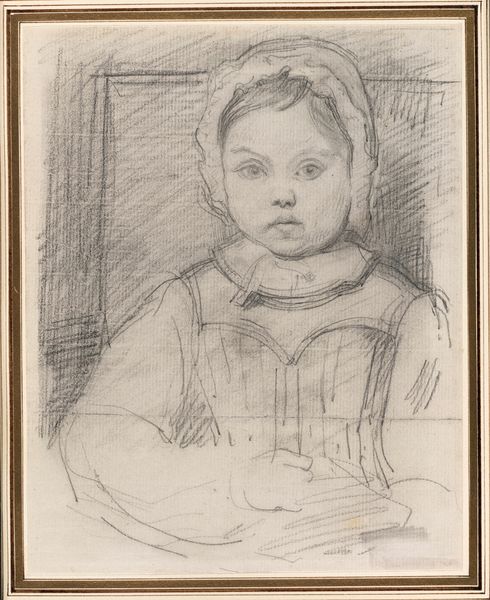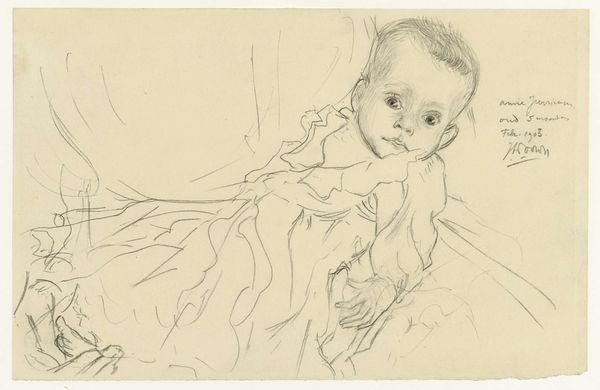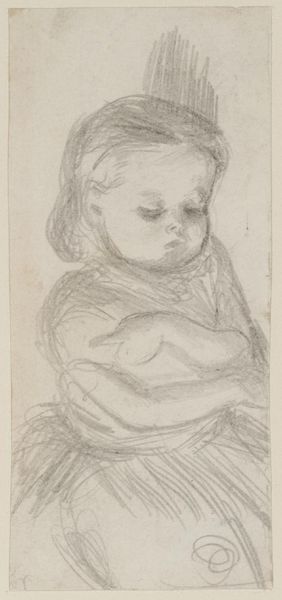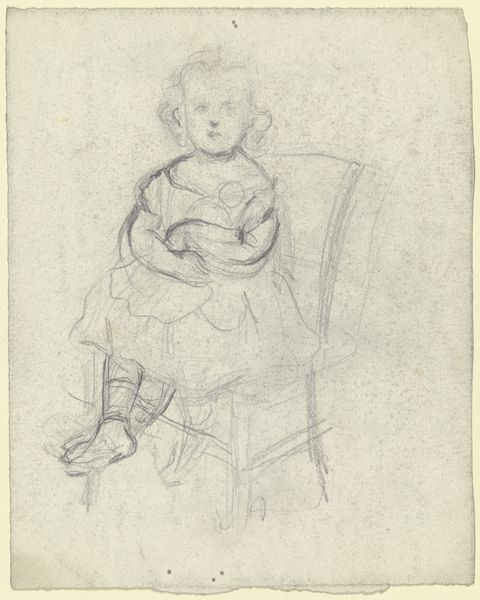
drawing, pencil
#
portrait
#
pencil drawn
#
drawing
#
facial expression drawing
#
light pencil work
#
pencil sketch
#
portrait reference
#
pencil drawing
#
pencil
#
animal drawing portrait
#
portrait drawing
#
pencil work
#
pencil art
#
modernism
#
realism
Dimensions: height 488 mm, width 389 mm
Copyright: Rijks Museum: Open Domain
Curator: This is Henk Henriët’s “Zittende baby met een lap in de hand,” or “Seated Baby with a Cloth in Hand,” from 1934, held here at the Rijksmuseum. It’s a delicate pencil drawing. Editor: There’s something so fragile and contained about it. The baby seems entirely preoccupied with the cloth, shut off from the world. The rendering of light seems so effortless. Curator: Henriët was known for his portraits and landscapes, often working in a realist style influenced by modernism. We should consider the social conditions present during that period. In the 1930s, social inequality was high in the Netherlands, particularly affecting the working class. Art played an important role in shaping and documenting individual lives. The tenderness of this sketch contrasts sharply with prevailing views about working class mothers. Editor: Indeed. The baby is the central subject, its posture, even the backdrop material create the idea of "manufactured tenderness." I'm drawn to how the medium contributes to the mood. Pencil lends itself well to capturing these nuanced tones and textures in the cloth that add so much depth. Curator: Consider also how Henriët subverts expected notions of domesticity. The baby, rather than being coddled or adored, seems almost… autonomous in its play. Is Henriët suggesting something about early independence, even within such constraints? It might critique the period's conventions about childhood dependency. Editor: I can agree. There’s an incredible attention to detail, particularly with those chubby limbs and tiny toes. The cloth becomes not just a prop, but an extension of the baby's tactile exploration of its world. It makes me consider what kinds of labour practices shaped the materiality of that textile. Is it a simple piece of cloth, or something repurposed, reflecting scarcity or ingenuity? Curator: Such a reading provides us with a critical lens. It opens a narrative where labor, gender, and early life experiences intersect, revealing socio-economic realities beyond what first appears on the surface. Editor: It’s fascinating how a seemingly simple drawing invites contemplation on labour and the material circumstances shaping these fleeting moments in life. Curator: Exactly, Henk Henriët captures something so delicate. It can start meaningful discourse concerning intersectional themes. Editor: It definitely does—thank you for your illuminating interpretation.
Comments
No comments
Be the first to comment and join the conversation on the ultimate creative platform.




